Succulents are some of the most interesting plants you can easily grow and care for. However, many succulents seen indoors or in pots appear to grow as small plants.
What if you want succulents that grow large? To see some large potted succulents you can grow, continue reading this article.
Table of Contents
1. African Milk Tree (Euphorbia trigona)

- Height: 4–10 feet
- USDA hardiness zone: 8–12
- Bloom season: Spring and summer
The unique thing about cacti is that their leaves are reduced to spines. As for this cactus-like plant, however, it has some actual succulent leaves.
The beautiful and large plant gets its name from the milk-like sap in its stem. You can see the milk when you break the leaves off the stem.
Of course, you can grow your African milk trees in pots. Just make sure you locate them suitably.
These plants originate from Africa, so grow them in a place with temperatures ranging from 55°F to 80°F. Also, the humidity level should be around 50%.
African milk trees are easy to care for so long as you can get their growing conditions right.
Ensure that you keep your plants in a visible location, too, so that they can steal the show, as they always do.
2. Snake Plant (Dracaena trifasciata)

- Height: More than 6 feet
- USDA hardiness zone: 10–12
- Bloom season: Spring
There’s no way you’d find a list of popular succulents without adding snake plants. These plants can also grow large if you grow them in the right conditions.
Snake plants grow relatively slowly, but you’ll be glad you were patient when their tall leaves fill your pots. They grow erect, so repotting them is not necessary as frequently as other succulents.
Snake plants are very hardy plants.
If you don’t have much time to garden, snake planes are one of the few succulents that you can start with.
While they can grow in different types of soil, it is best to grow them in a loose substrate.
The plants spread through their underground horizontal stems, so they need a pot with space to grow more leaves. Thankfully, new leaves do not grow far away from the other leaves.
Water your plants weekly or twice weekly when it’s hot. You can also mist them if conditions are arid.
3. Southwestern Barrel Cactus (Ferocactus wislizeni)

- Height: 2–10 feet
- USDA hardiness zone: 9–11
- Bloom season: Summer
How’d you love to grow a ball-like plant with spines?
If you are looking for large and unique succulents, here’s the perfect one for you.
This cactus grows somewhat spherical and has a lot of sharp spines covering its stem. While it is easy to care for in terms of watering and feeding, it requires time to remove spider webs from its spines properly.
Like other succulents, this cactus grows in dry soil. However, ensure that the soil is never completely dry, as it can affect the growth rate and beauty of your cactus.
You can use a moisture reader to check the moisture of the soil. Please do not use your fingers so that you do not hurt yourself.
4. Desert Rose (Adenium obesum)
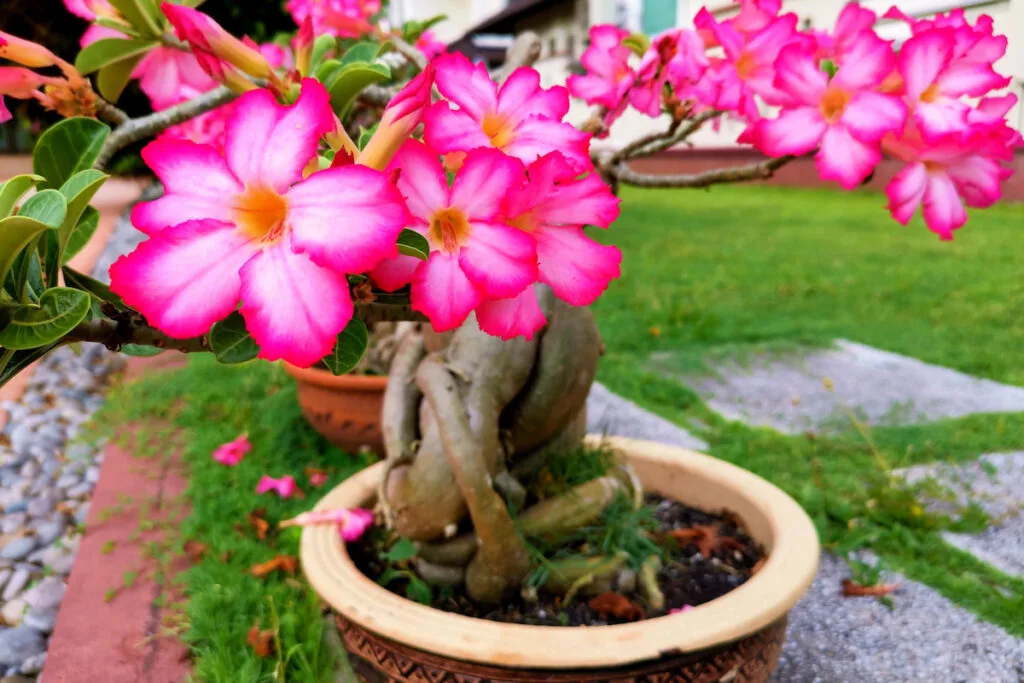
- Height: 6–9 feet
- USDA hardiness zone: 11
- Bloom season: Early spring
You are looking for large succulents, so here’s one that can become a tree if you give it the chance. However, it won’t outgrow its pot, so your desert rose will not become a tree when you grow it.
This lovely plant has thick leaves, stems, and flowers. Its pink flowers are eye-catching; they can be just the extra look your home needs.
While this plant is beautiful, note that it is poisonous.
Therefore, keep it far away from your pets and kids.
You can grow your desert rose plants as standalone plants to give one part of your home a striking beauty.
Remember to repot your plants, especially when their substrate is no longer fast-draining. Also, prune damaged branches so the plant can stay healthy and balanced.
5. Agave (Agave salmiana)
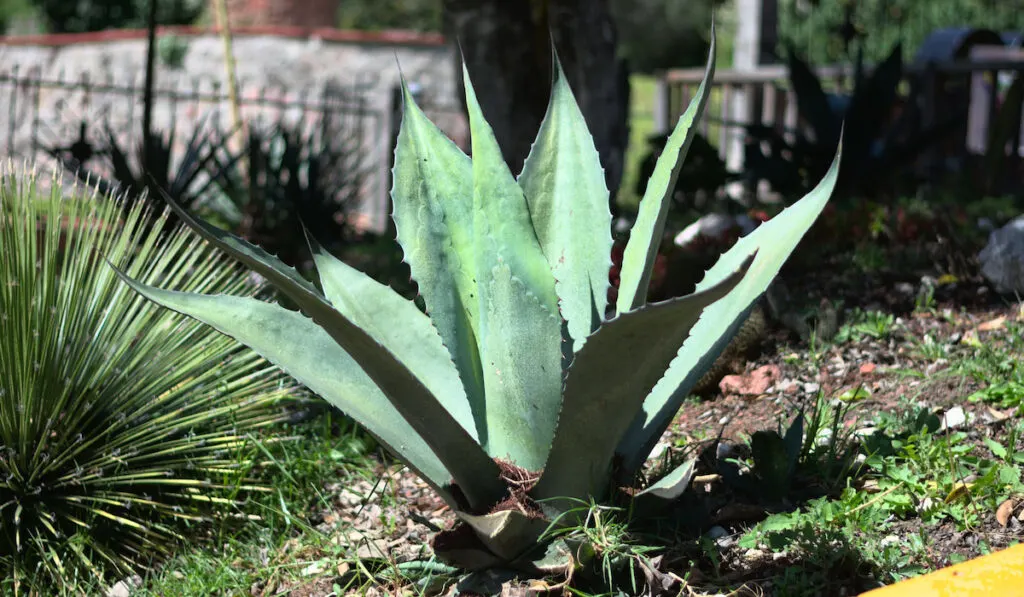
- Height: 8–10 feet
- USDA hardiness zone: 7–11
- Bloom season: Early spring
Agaves are some of the most popular types of succulents you can grow. Agaves are always interesting to see because their leaves are almost perfectly arranged from the base.
For this particular agave, you get to see pretty long leaves. This succulent, which you can grow in pots, is not just large; it is also unique looking.
Agaves growing in pots are best suited to growing beside a road or as a standalone plant. When growing them close to a path, ensure you carefully keep their large leaves off the path so that people do not step on them.
Agaves need minimal care so long as the temperature (60°F to 90°F), humid (around 50%), and their other growing conditions are met.
However, be vigilant and repel pests from your plants, as pests find agaves to be suitable hiding places.
Also, prune damaged leaves, as they will spoil the look of your plants. Ensure that every leaf is perfectly colored by feeding your plants with an agave nutrient mix.
6. Candelabra Spurge (Euphorbia ammak ‘Variegata’)

- Height: 15–20 feet
- USDA hardiness zone: 9–11
- Bloom season: Summer
If you love cacti, you’ll definitely love this plant, as it embodies the true definition of what cacti look like. This spurge plant has different green branches with dry edges.
The plant is very hardy. You almost cannot go wrong when growing it, even as a first-time gardener.
Just ensure that you properly water and feed your plants.
In spring, water your plants once weekly. However, water them twice weekly when summer comes.
Don’t water them in autumn, and ensure that the soil never dries completely in winter, especially if you are growing them indoors.
If you want to handle or prune your plants, remember to wear gloves to stay safe. Ensure that you repot the plants when they outgrow their pots.
7. Jumping Cholla (Cylindropuntia fulgida)
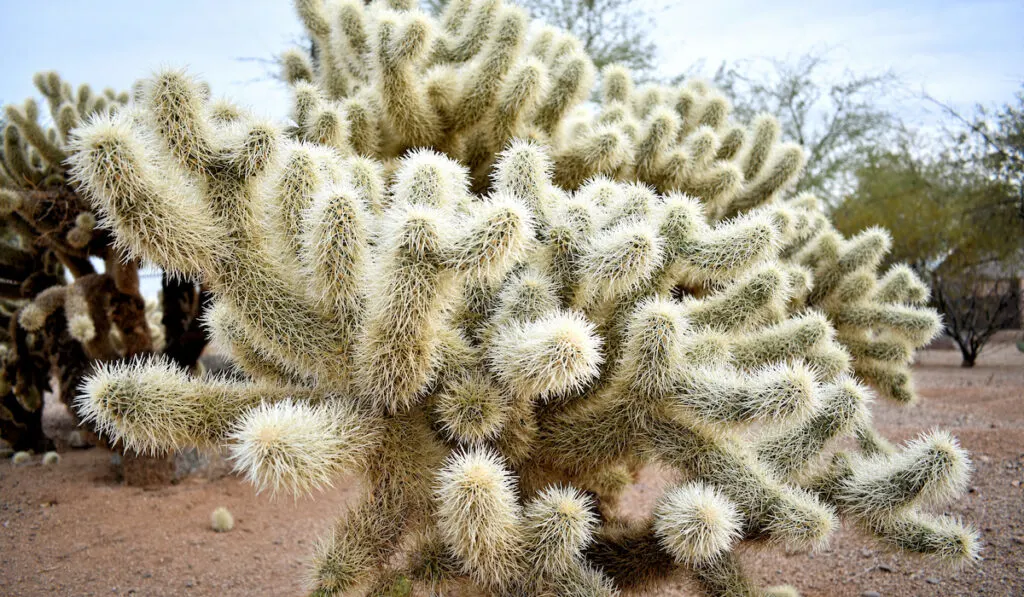
- Height: More than 10 feet
- USDA hardiness zone: 8–11
- Bloom season: Summer
Here’s a cute cactus that you can grow.
When small, these cacti appear like cute pets you’d love to touch. However, they can grow very large to fill their pot in no time.
Jumping chollas are truly unique-looking.
It’s a great idea to add them to your succulent collection. However, ensure you can meet their temperature (70°F to 85°F) and humidity (lower than average humidity) needs.
Protect them from the scourging heat of summer by using a shade cloth. Also, water them more often during hot periods.
If you intend to prune your plants, remember to wear gloves so that you do not hurt yourself. Prune damaged stems so that your chollas will always look their best.
8. Aloe vera
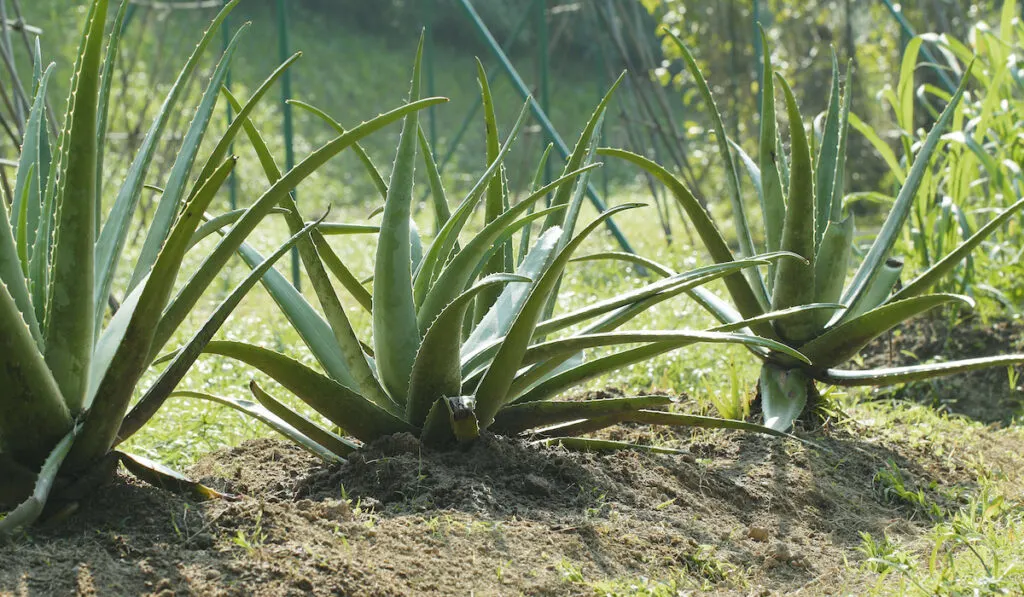
- Height: 24–30 inches
- USDA hardiness zone: 8–11
- Bloom season: Spring and summer (rarely)
Aloe vera plants will not grow as large as some of the other succulents on this list. However, they are relatively large (when compared with other succulents) and will surely be one of the first plants to think of when looking for what to grow.
Aloe vera succulents are not just plants you grow because of their beauty. Yes, they are beautiful. However, they have a lot of medicinal benefit.
The sap or liquid in aloe vera leaves helps in skin care and is used in healing many conditons.
The aloe vera industry is a fast-growing one.
Even though these plants are invaluable, they are straightforward to care for.
To grow aloe plants, ensure that the substrate dries out quickly. Also, use a nutrient mix made for aloes and other related succulents.
Quickly transplant the outgrowths or pups so that they do not slow down the growth of your mature aloe plants.
9. Elephant Bush (Portulacaria afra)

- Height: 8–15 feet
- USDA hardiness zone: 9–11
- Bloom season: Late spring
Succulents indeed come in different forms. Here’s a unique one that you’ll love to grow.
This beautiful plant has pretty, tiny green leaves and red branches. The contrasting colors will surely attract attention.
Elephant bush does not grow very tall, but it has a large spread, making it a suitable plant to grow in hanging baskets.
The plant does not need a lot of sunlight like other succulents, so you can grow it in places where other succulents cannot grow.
So long as it gets four or more hours of daily sun, elephant bush will grow just fine.
10. Saguaro (Carnegiea gigantea)
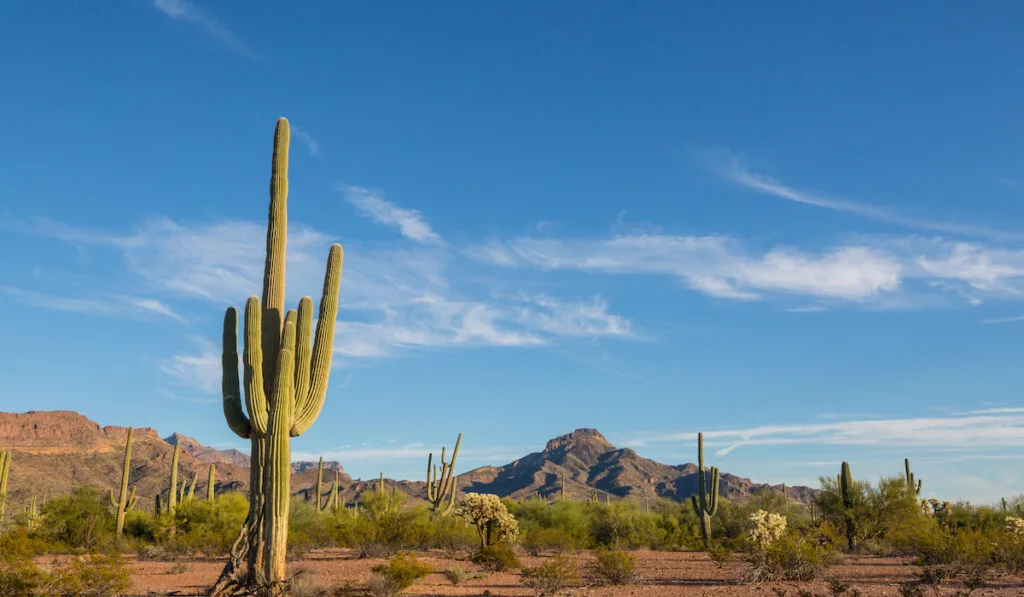
- Height: More than 40 feet
- USDA hardiness zone: 9
- Bloom season: Summer
Here’s one of those cacti that you’d see and think is cute. This beautiful cactus can grow very tall when you give it the chance.
It is not prickly, so you can grow it wherever you want. Just ensure that you select a well-lit spot.
Saguaro is easy to grow and propagate.
You can even collect its outgrowths and plant them in new pots.
For its substrate, keep it loose so that the roots can stay aerated. However, keep it slightly moist so your cacti do not die from dehydration.
11. Eve’s Pin (Austrocylindropuntia subulata)

- Height: Up to 13 feet
- USDA hardiness zone: 9–11
- Bloom season: Mid-spring to summer
You are not just looking at a large succulent; you are looking at a beautiful one. This beautiful cactus has needles all over its stems. Touching the sharp needles will hurt.
It is one of those plants that your visitors won’t stop looking at or asking about, as it is truly unique.
You can grow your cacti in pots and keep them wherever you want, inside or outside the home.
This cactus needs at least six hours of daily sun.
However, keep it away from the hot summer sun so it does not develop burn marks on its stem.
For nutrients, use a diluted or slow-release cactus mix so that the plants can grow without problems. Also, occasionally water the plants, especially before the soil completely dries.
Conclusion
As you’d agree, these succulents are not just large, they are pretty easy to grow and care for. So long as you can get their growing conditions and requirements right, you can grow them without problems.
Remember to take good care of your plants so that they can grow tall, healthy, and beautiful.
